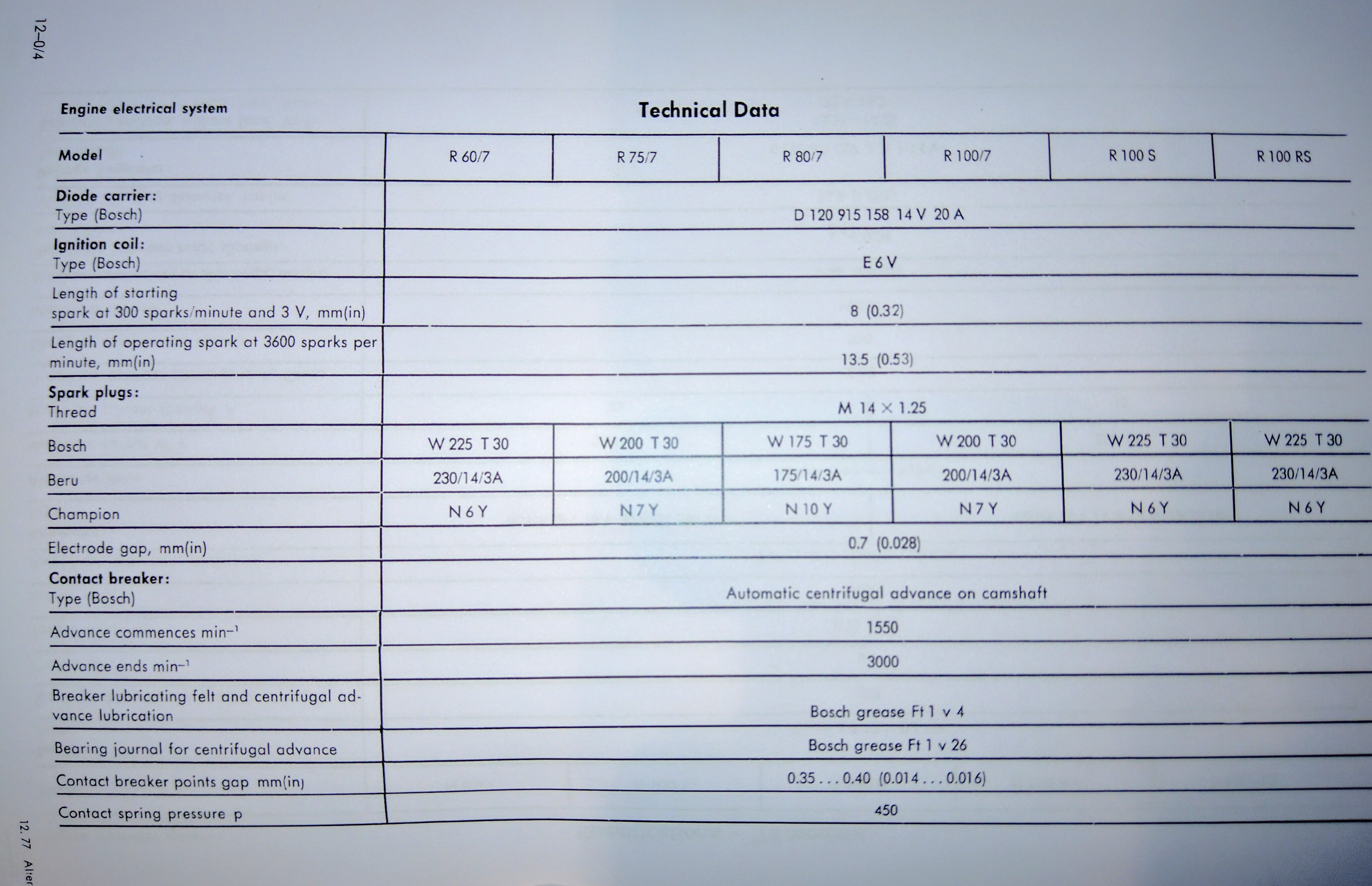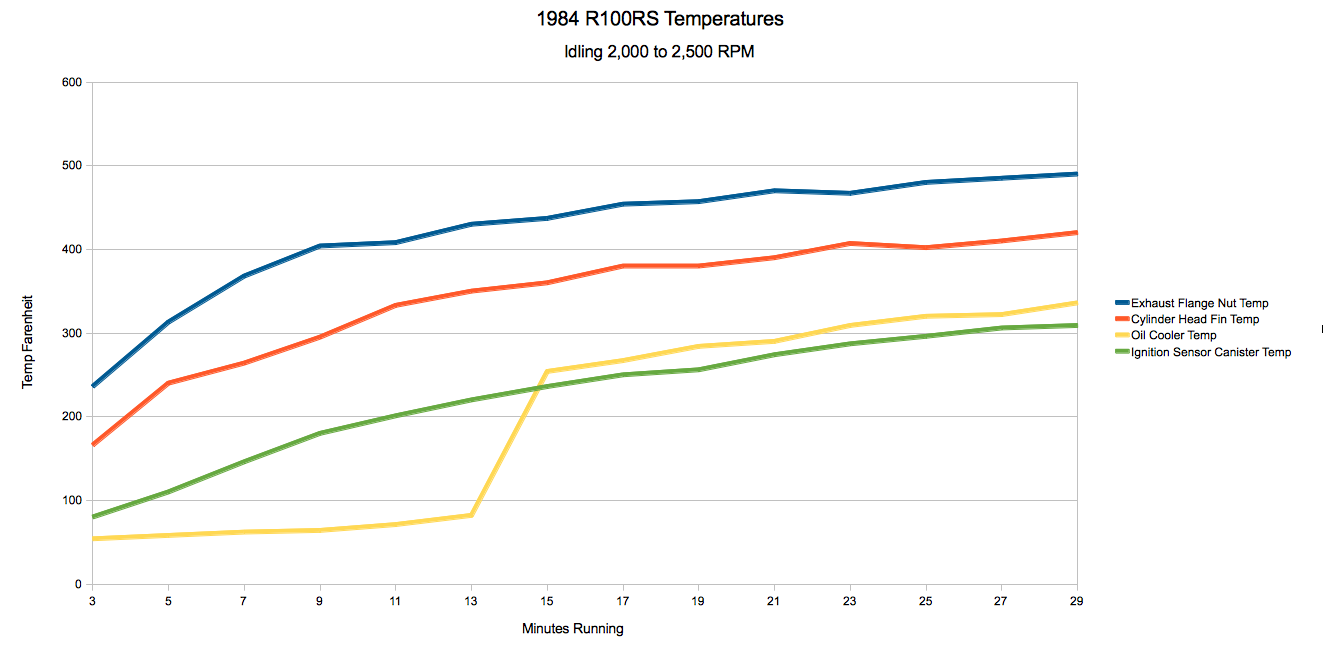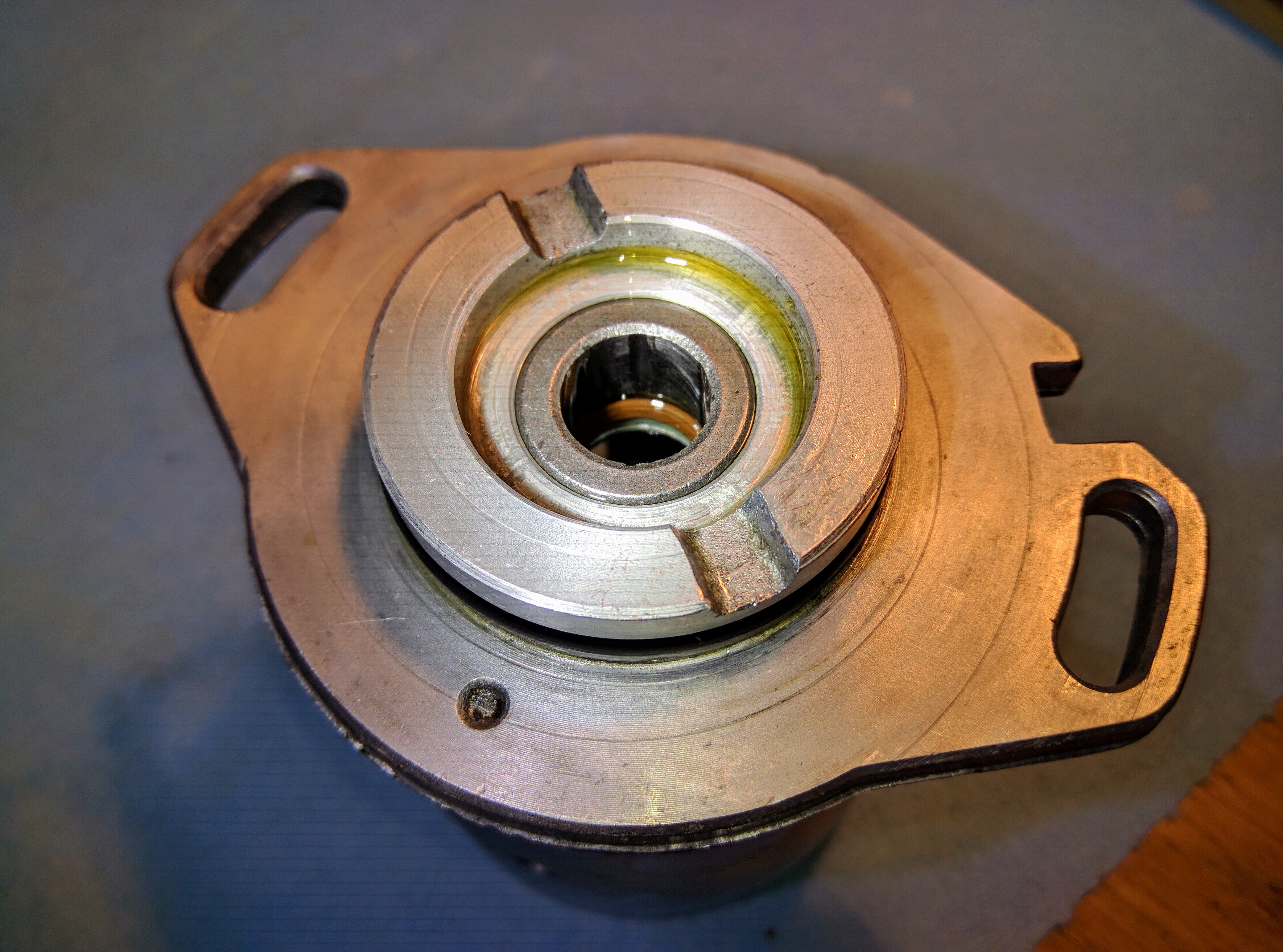Several months ago I overhauled the ignition sensor canister “bean can” on my 1984 BMW R100RS. I describe that process in a seperate entry in this blog – available HERE. Robert Fleischer’s excellent web site has an article reporting that the grease for this unit’s bearing is Bosch FT1-V22 or FT1-V26. You can read Fleicher’s article HERE.
BMW’S OEM shop manual also lists this grease for this application – listed as “Bearing journal for centrifugal advance.” It specifies Bosh Grease FT1-V26.

Internet searches reveal that Bosh greases have new part numbers – FT1-V4 for distributer cam lobes is also referred to as 5-700-002-005. FT1-V26 is 5-700-005-005.
I was able to find quite a few references to 5-700-002-005, and was even able to purchase a (large) tube of Bosh grease with the original label FT1-V4. Unfortunately, as my motorcycle has electronic ignition, I don’t have a need for it. I found no datasheets for any Bosch greases.
Without a datasheet, it’s difficult to identify a proper substitute. The closest to a substitute recommendation I found is a German language forum in Europe where one fellow suggests a substitute for FT1-V22 with a different grease found on eBay. The message thread is HERE. Unfortunately, this substitute product is unavailable for shipping to the USA. And I couldn’t find this product anywhere else.

Without an known substitute to Bosch FT1-V22 or Bosch FT1-V26, I elected to use BMW’s “wheel bearing and small parts” grease when I overhauled my ignition sensor canister. (BMW part number: 82000419622) The datasheet for this grease lists a “upper service temperature” of 284F. The datasheet for this grease can be viewed HERE. It seemed like it was a safe bet for this application. I learned that this was a mistake.
I experienced no trouble riding the motorcycle about 2,000 miles after this ignition sensor canister overhaul. However the engine quit from apparent ignition failure when running in my garage for about 20 minutes. (I was conducting a test of battery voltages at various RPMs with my headed riding gear connected and on.)
I suspected the hall effect sensor in the ignition canister had failed due to excessive heat – not unlikely due to its age. I ordered a replacement, but before installing it I wanted to see if the failure would repeat. And I wanted to know what the motorcycle’s temperatures were leading up to the failure.
I removed the front lower fairing panel and the front engine cover, and conducted a test of temperatures at four points using an infrared thermometer. After starting the cold engine in 51F ambient temperature, recorded the temperature every 2 minutes at the exhaust flange nut, the cylinder cooling fins, the oil cooler and the ignition sensor canister. After 29 minutes the engine again stopped due to apparent ignition failure.
The recorded temperatures are displayed in this graph:

At 29 minutes the ignition sensor canister exceeded 300F. I decided to compare this to the operating temperature range in the hall effect sensor’s datasheets. Fleischer’s article on ignition lists the hall sensor to be either a Honeywell 2AV54 or a Siemens HKZ101. Fleischer’s article is available HERE.
The data sheets for both these hall effect sensors show that 300F exceeds the operating limitation of both devices. Links to these datasheets are here:
The datasheet report the hall sensor’s operating temperatures of up to 150C to 160C – which converts to about 300F to 320F. This suggests that my motorcycle’s hall sensor failed due to being over temperature, and may not have failed due to age or other malfunction.
According to it’s datasheet, at 300F the ignition canister temperature exceeds the BMW grease’s 284F upper service limit. I don’t know if grease failure contributed to the high temperature of the ignition canister, but regardless, the BMW grease left no margin of safety. I disassembled the ignition canister and found evidence that the BMW grease had liquified.

The only other possibility for a substitute grease on my shelf is MOTUL Tech Grease 300. It’s datasheet lists a temperature limit of 302F and a peak temperature of 428F. It’s datasheet is available HERE. This would have been a better choice than the BMW grease I had used. But something with an even higher temperature limit would be even better.
The problem for me choosing a grease substitute is that I’m not knowledgeable about grease applicability. I found an informative message thread about this particular issue HERE.
I discovered an application chart for a line of grease products made by Dow Corning that offers some help. The chart (available HERE) lists Dow Corning Molykote grease products by application (gears, ball bearing, busings, etc.) and information about the specific properties, limitations and example usages of each product.
Molykote BG 20 High Performance Synthetic Grease is listed as a general purpose synthetic grease for metal-to-metal plain metal bearings, bushings and sleeves. It’s temperature range is -50F to 360F.
Molykote 44 High Temperature Bearing Grease is listed as a high temperature grease with an operating range of -40F to 400F.
Both these products are available on eBay and other vendors for about $25 for a 150 gram tube. I ordered one tube of each from Motion Industries.





Do you still have the 5-700-002-005? I’d like to purchase it from you.
LikeLike